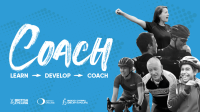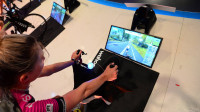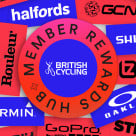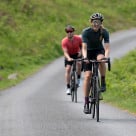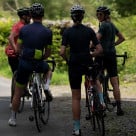CPD: Improving Your Rider's Core Stability
August 2009
 Riders can usually improve their training and performance on the bike by including Core Stability exercises as part of their programme. Time dedicated to this aspect of training will depend on a rider's individual needs. With the help of a qualified practitioner, Core Stability training may improve a rider's performance and riding comfort as well as reducing the risk of injury by improving balance and co-ordination. This months CPD article will therefore look at some aspects of core stability training for cyclists.
Riders can usually improve their training and performance on the bike by including Core Stability exercises as part of their programme. Time dedicated to this aspect of training will depend on a rider's individual needs. With the help of a qualified practitioner, Core Stability training may improve a rider's performance and riding comfort as well as reducing the risk of injury by improving balance and co-ordination. This months CPD article will therefore look at some aspects of core stability training for cyclists.
How does Core Stability work?
The action of riding a bike requires cyclists to generate force to turn the pedals, and to withstand the forces acting on their body caused by the pedalling action. Both ‘generating' and ‘withstanding' forces are an essential part of cycling. The muscles required to withstand and generate these forces can be are categorised into two broad groups:
- The mobilisers, which move limbs (e.g. the quadricep muscle group).
- The stabilisers, which work at a low level to hold and control movement (e.g. transversus abdominus).
The ability of the body to stabilise motion is known as functional stability. Stability can influence many factors, such as power output, speed, flexibility, agility and strength. Exercising control by maintaining stability can help a cyclist achieve performance gains in one or more of these areas.
Core Stability is the control of trunk stability using specific muscles. The main abdominal muscle affecting Core Stability is called the transversus abdominus (TA), which, alongside other muscles including the abdominal obliques, pelvic floor muscles and multifidus, supports the lumbar spine. The TA muscles supports, rather than generates, movement and are quite deep within the torso. They act independently of the direction of movement, and activate using a feed-forward mechanism, coming into play just before a movement happens. Then, as the movement progresses, they hold their activation, providing the necessary stability for the rider.
Coaching and Core Stability Core Stability is important in all cycling disciplines and at all levels. Coaches should therefore aim to understand how poor Core Stability can adversely affect their rider's performances. Try to identify wrong uses of specific muscles that affect Core Stability. Symptoms of this maybe highlighted by a poor technique your rider is struggling to improve, or by past injury affecting the perfect execution of a technique.
Core Stability is important in all cycling disciplines and at all levels. Coaches should therefore aim to understand how poor Core Stability can adversely affect their rider's performances. Try to identify wrong uses of specific muscles that affect Core Stability. Symptoms of this maybe highlighted by a poor technique your rider is struggling to improve, or by past injury affecting the perfect execution of a technique.
Movement dysfunctions can occur because of many different factors. As a guide, poor Core Stability manifests itself in the following ways:
- Riders may overuse their hip flexors, abdominals or lower-back muscles to maintain form and position.
- Riders may change their trunk position in order to feel comfortable when cycling.
- Riders may clench their jaws or bite their lips.
- Riders may use their elbows and knees inappropriately while riding (eg wiggle their elbows or knees), which may affect their quality of movement and their optimum aerodynamic position.
The ability to keep the whole of the trunk in a stable and controlled posture allows the larger muscles, which provide strength and power, to generate higher forces. Most importantly for riders, poor trunk stability affects the ability to drive with the legs.
Assessing Core Stability
Core Stability training always begins with assessment by a qualified practitioner and is outside the remit of the Level 3 Certificate in Coaching Cycling. Many sports physiotherapists are experienced in this area and will be able to assess your riders or refer them to another appropriate practitioner or body.
However, an understanding of what is involved is essential, so that you can incorporate stability training into the overall programme. A full assessment usually involves looking at three areas: the trunk zone, the upper control zone (around the shoulders) and the lower control zone (around the hips). Checks will be carried out as to whether the rider can maintain a neutral spine and a neutral spine in action. Following this analysis, riders will be given a programme to carry out, which, to begin with, is often independent of their on the bike training.
Assessment tools are often very simple tests, such as a standing single knee raise or a seated foot raise on an exercise ball. This will clearly show the assessor any areas of weakness, or situations where the core muscles are being activated incorrectly or not at all. Often the sequence of firing the muscles is important and a trained practitioner will consider this in identifying why movement dysfunctions are taking place.
Core Stability training is usually prescribed as a stand-alone training session. When planning training sessions, remember that the session is best carried out when riders are fresh, both mentally and physically. They must be able to feel the activation of the core muscles and concentrate fully on holding this activation for the required length of time. It is not advisable to do a Core Stability training session after any other training. Ideally, fit the session into a rest day from cycling, or early in the day before other training starts.
Sometimes, an expert will suggest a structured lesson to support the rider's Core Stability training and development. This may mean attending a Pilates, yoga or specialist core workout class; all of which have the advantage of guiding the rider through the various steps. However, it is probably better for riders to delay joining these types of class until they have been taught correct muscle activation in individual or small group situations. It is too easy to use inappropriate muscles in a group situation when instructors are unable to check every participant.
Training Core Stability
There are many ways of training Core Stability; for example, exercising on an unstable base (such as an exercise ball). The first step in many Core Stability training programmes is learning to recruit the TA muscles in a supine (lying down) position. This can be done by carefully going through the activity outlined below.
Activity to recruit the TA muscles in a supine position:
- Wear loose, comfortable clothing
- Lie on your back with your knees bent and feet on the floor
- Aim for a neutral spine by overarching your back, then pushing it into the floor. Neutral is midway between, with a small gap between the floor and your back
- Breathe in deeply, relaxing the stomach muscles
- Breathe out and draw in your lower abdomen, imagining the navel going back towards the floor. Pilates teachers describe this as zipping up
- Do not use your larger abdominal muscles (six-pack) to perform this exercise
- TA is also activated by drawing up your pelvic-floor muscles
- Hold a sub-maximal contraction for 10 seconds, checking that the rest of your body is relaxed
- Repeat 5-10 times.

Note: By placing your thumbs just to the inside of their hip bones and applying gentle inward pressure, riders should be able to feel the core muscles activate. If they find this difficult, they should seek expert advice.
Summary
Over time, riders can become proficient at activating the TA muscles. However, many view the exercises in isolation and do not always try to incorporate the muscle control into their particular training. Subsequent exercises must help your rider progress from being able to activate their primary stabilisers when not exercising, to using the muscles during the normal activities of daily living, and, eventually, to learning how to activate the muscles when riding the bike during training and competition.
More information on off the bike training can be found within the Level 3 Coaching Handbook: Coaching For Performance which is part of the Level 3 Track and Level 3 Road and Time Trial Courses.

